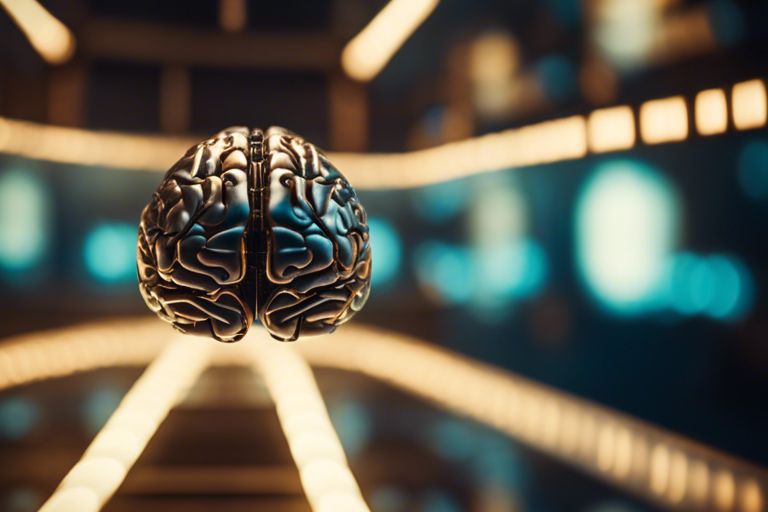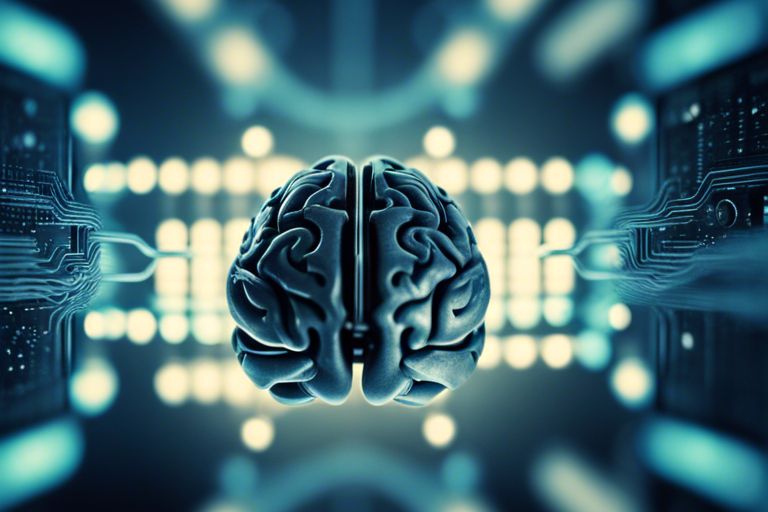Deep Learning – Unveiling The Intelligence Behind Emerging Technologies
Delve into the intricate world of deep learning, where machines are equipped with the ability to learn and improve from experience without explicit programming. This powerful subset of artificial intelligence holds the key to unlocking groundbreaking advancements in various industries, revolutionizing the way we interact with technology. From enhancing healthcare diagnostics to driving autonomous vehicles, the capabilities of deep learning are reshaping our future. Join us as we unravel the complexities and discover the intelligence behind the emergence of these transformative technologies.
Core Concepts and Architectures
A deep understanding of the core concepts and architectures in deep learning is essential for grasping the underlying intelligence behind emerging technologies. In this chapter, we will delve into the fundamental principles and structures that form the backbone of deep learning models.
Neural Networks Explained
Any exploration of deep learning must begin with neural networks, which serve as the basic building blocks of this field. Neural networks are inspired by the biological structure of the human brain, consisting of interconnected nodes known as neurons. These neurons are organized into layers, with each neuron processing and transmitting information to the next layer through weighted connections.
Neural networks excel at learning complex patterns and relationships from vast amounts of data through a process called training. The strength of neural networks lies in their ability to automatically discover features and representations from the data, enabling them to tackle a wide range of tasks such as image recognition, natural language processing, and speech recognition.
Prominent Deep Learning Models
Neural networks are at the heart of various prominent deep learning models that have revolutionized numerous industries. These models, such as Convolutional Neural Networks (CNNs), Recurrent Neural Networks (RNNs), and Generative Adversarial Networks (GANs), have demonstrated remarkable capabilities in tackling real-world problems with unprecedented accuracy and efficiency.
A standout model in deep learning is the Convolutional Neural Network (CNN), which has been instrumental in advancing computer vision tasks, such as image classification and object detection. With its ability to automatically learn and extract hierarchical features from images, CNNs have significantly improved the accuracy of visual recognition systems.
Applications of Deep Learning
If you have ever wondered about the incredible technology powering emerging technologies such as self-driving cars, personalized recommendation systems, and facial recognition software, look no further than deep learning. This subset of artificial intelligence has revolutionized the way machines learn to make decisions, enabling them to perform tasks that were once only possible for humans.
Image and Speech Recognition
An essential application of deep learning is in image and speech recognition. Deep learning algorithms can analyze vast amounts of data to identify patterns and features in images and speech, allowing computers to understand and interpret visual and auditory information like never before. Companies use this technology for facial recognition systems, voice assistants, and even medical image analysis for early disease detection.
By leveraging deep learning models, developers can train systems to recognize objects in images, transcribe spoken words into text, and even generate captions for images and videos with remarkable accuracy. This capability has a wide range of applications, from enhancing accessibility for individuals with disabilities to improving security measures in industries like law enforcement and finance.
Natural Language Processing and Autonomous Systems
An exciting frontier of deep learning lies in natural language processing (NLP) and the development of autonomous systems. These technologies enable machines to understand, interpret, and generate human language, leading to advancements in chatbots, language translation, and autonomous vehicles. The ability of machines to comprehend and respond to human language opens up a world of possibilities for seamless interactions between humans and machines.
Processing vast amounts of text data, deep learning models can analyze sentiment, extract key information, and generate responses that mimic human conversations. Autonomous systems powered by deep learning algorithms can navigate complex environments, make real-time decisions, and adapt to new situations without human intervention, heralding a new era of intelligent automation.
Challenges and Ethical Considerations
Overcoming Data and Computational Limitations
For organizations venturing into the realm of deep learning, one of the major challenges involves dealing with the sheer volume of data required for training complex neural networks. *Considerations* include sourcing high-quality data, ensuring its relevance to the task at hand, and managing the costs and resources associated with data collection and storage. Additionally, the computational power needed to process this vast amount of data and train deep learning models can be a barrier for many businesses.
*Considerations* also need to be taken into account when it comes to selecting the right hardware and software infrastructure to support deep learning initiatives. Investing in powerful GPUs or leveraging cloud-based services are common strategies employed to overcome computational limitations and expedite the training process, but these decisions require careful evaluation to strike a balance between performance and cost-efficiency.
Navigating the Ethical Landscape
Data ethics and privacy concerns are crucial *Data* when developing and deploying deep learning algorithms. As the technology becomes more pervasive in various industries, ensuring that data collection, storage, and usage practices abide by legal regulations and ethical guidelines is paramount. Issues such as bias in algorithms, potential misuse of personal data, and the implications of AI decisions on individuals and society at large necessitate a proactive approach to navigating the ethical landscape.
To address these ethical challenges, organizations need to establish robust governance frameworks that prioritize transparency, accountability, and fairness in their use of deep learning technologies. *To* ensure that AI systems are developed and deployed responsibly, ongoing monitoring, auditing, and collaboration with regulators and other stakeholders are essential steps to mitigate risks and build trust in the technology.
The Future of Deep Learning
Innovations on the Horizon
To truly comprehend the future of deep learning, we must acknowledge that the field is constantly evolving. Not only are researchers pushing the boundaries of what is possible, but industry leaders are investing heavily in the development of practical applications. To keep up with the rapid pace of innovation, experts are exploring new architectures, algorithms, and methods to enhance the capabilities of deep learning systems.
To illustrate, advancements in unsupervised learning are enabling machines to learn from raw data without the need for labeled examples. This opens up a realm of possibilities for applications in domains where labeled data is scarce. Additionally, the integration of deep learning with other emerging technologies such as blockchain and edge computing is set to revolutionize industries ranging from healthcare to finance.
Integrating Deep Learning into Society
Learning how to effectively integrate deep learning into society is a key challenge that must be addressed as we move forward. It is crucial to educate the public on the benefits and risks associated with the widespread adoption of these technologies. Governments and organizations must work together to establish guidelines and regulations that ensure the ethical use of deep learning systems.
It is imperative that we foster a culture of transparency and accountability in the development and deployment of deep learning technology. By promoting responsible practices and promoting diversity in the field, we can leverage the full potential of deep learning for the betterment of society.

Conclusion
The exploration of deep learning technology has revealed the intricate mechanisms behind the intelligence driving emerging technologies. By delving into the neural networks and algorithms that mimic the human brain, we can now understand how machines learn, make decisions, and process vast amounts of data. This understanding paves the way for groundbreaking advancements in various fields, from healthcare to self-driving cars, revolutionizing our world with unprecedented intelligence.
FAQ
Q: What is deep learning?
A: Deep learning is a subset of machine learning that involves artificial neural networks with multiple layers. These networks are capable of learning from large amounts of data to recognize patterns and make predictions.
Q: How does deep learning work?
A: Deep learning works by using algorithms to train neural networks on large datasets. These networks learn to recognize patterns in the data through a process of forward propagation, where input data is passed through the network layers, and backward propagation, where errors are calculated and used to adjust the network’s parameters.
Q: What are some applications of deep learning?
A: Deep learning is used in a wide range of applications, including computer vision, natural language processing, speech recognition, healthcare diagnostics, autonomous vehicles, and more. It powers many emerging technologies and is at the forefront of artificial intelligence research.
Q: What are the benefits of deep learning?
A: Deep learning allows for the development of complex models that can learn from data and make decisions with high accuracy. It is capable of handling large and complex datasets, automating tasks that would be challenging for humans, and driving innovation in various industries.
Q: How can one get started with deep learning?
A: To get started with deep learning, one can begin by learning the basics of machine learning and neural networks. There are many online resources, courses, and tutorials available to help individuals build their knowledge and skills in deep learning. Hands-on practice with coding frameworks such as TensorFlow or PyTorch is also essential for gaining practical experience in implementing deep learning models.
![]()













